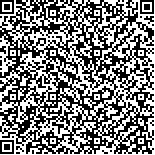Archive > Volume 44 Issue 10 > 2018,44(10):1267-1274. DOI:10.7519/j.issn.1000-0526.2018.10.003 Prev Next
Analysis of Moisture Source and Transport of Snowstorm in Hooked Cloud Area of an Occluded Cyclone
- Article
- Figures
- Metrics
- Preview PDF
- Reference
- Related
- Cited by
- Materials
Abstract:
The snowstorm that occurred with an occluded cyclone on 25 November 2013 was analyzed using conventional observations, FY2E satellite images and NCEP reanalysis data. The 120 h backwrad trajectories ending at 08:00 BT 25 November 2013 were simulated with HYSPLIT model. The results showed that the snowstorm was located in hooked cloud area of an occluded cyclone with mesoscale features. Of the 6 backward trajectories at each release point, only one trajectory came from the upper troposphere over the region to the west of Xinjiang and 5 trajectories originated from the lowmiddle troposphere over Mongolia or northern China. The air parcels along trajectory moved horizontally with weak descending towards eastern or southeastern regions. Then the air parcels in the lowmiddle troposphere went through Bohai Sea and Sea of Japan during 72-24 h while the air parcels in the middleupper troposphere passed over Yellow Sea or East Sea of China. Finally all parcels went up to snow area in several hours. Sea of Japan was an important source of moisture and Bohai Sea was the second source with airsea interaction while air parcels from East Asia land contained less water vapour. The longer distance and persisting time in Sea of Japan, the more moisture of the air parcel. The air parcels with high specific humidity and relative humidity moving quickly with southerly or southeast winds resulted in the snowstorm event.
Keywords:
Project Supported:
Clc Number:


Mobile website









